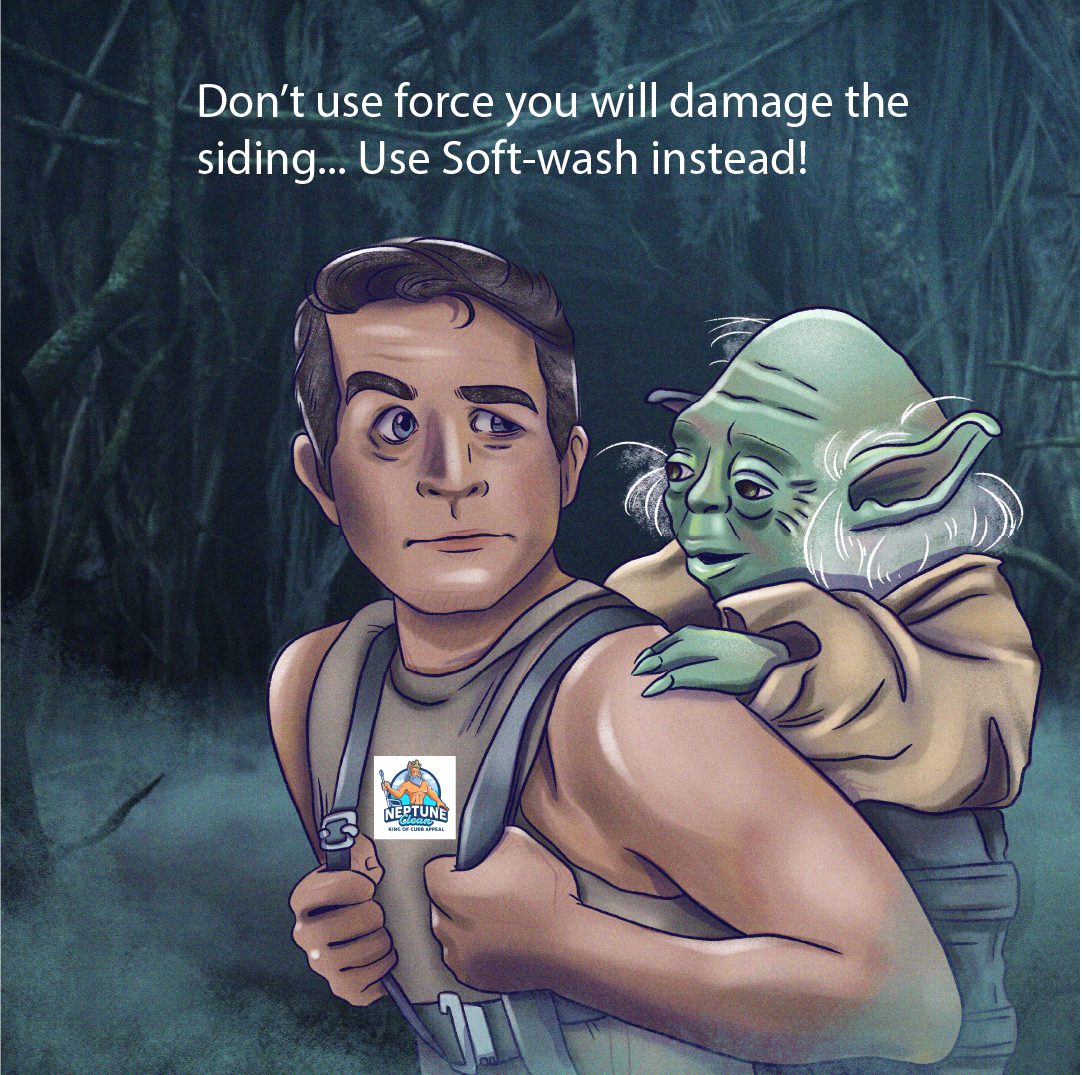
Tips To Pressure Wash a House
As the owner of Neptune Clean, and highly trained Jedi-Washer, I often hear homeowner confessions of failed DIY home cleaning attempts. The conversation always begins with “I have my own pressure washer but…” followed by the problem they encountered.
I always encourage homeowners to save money where they can. Heck I’m an avid DIY’er so I can’t blame them for wanting to take care of a simple exterior house cleaning project.
When you pressure wash a house, one common mistake homeowners make is using too much pressure to wash their siding to remove organic contaminants like mold, mildew, and algae. Using “high pressure” can damage siding. It can also force water under vinyl siding, into soffits, or under door and window jambs.
Brick is more forgiving of course but wood siding like cedar is more fragile than vinyl. What homeowners don’t realize when they pressure wash a house is that professionals rely on cleaners and each of these siding types require a different type of cleaner.
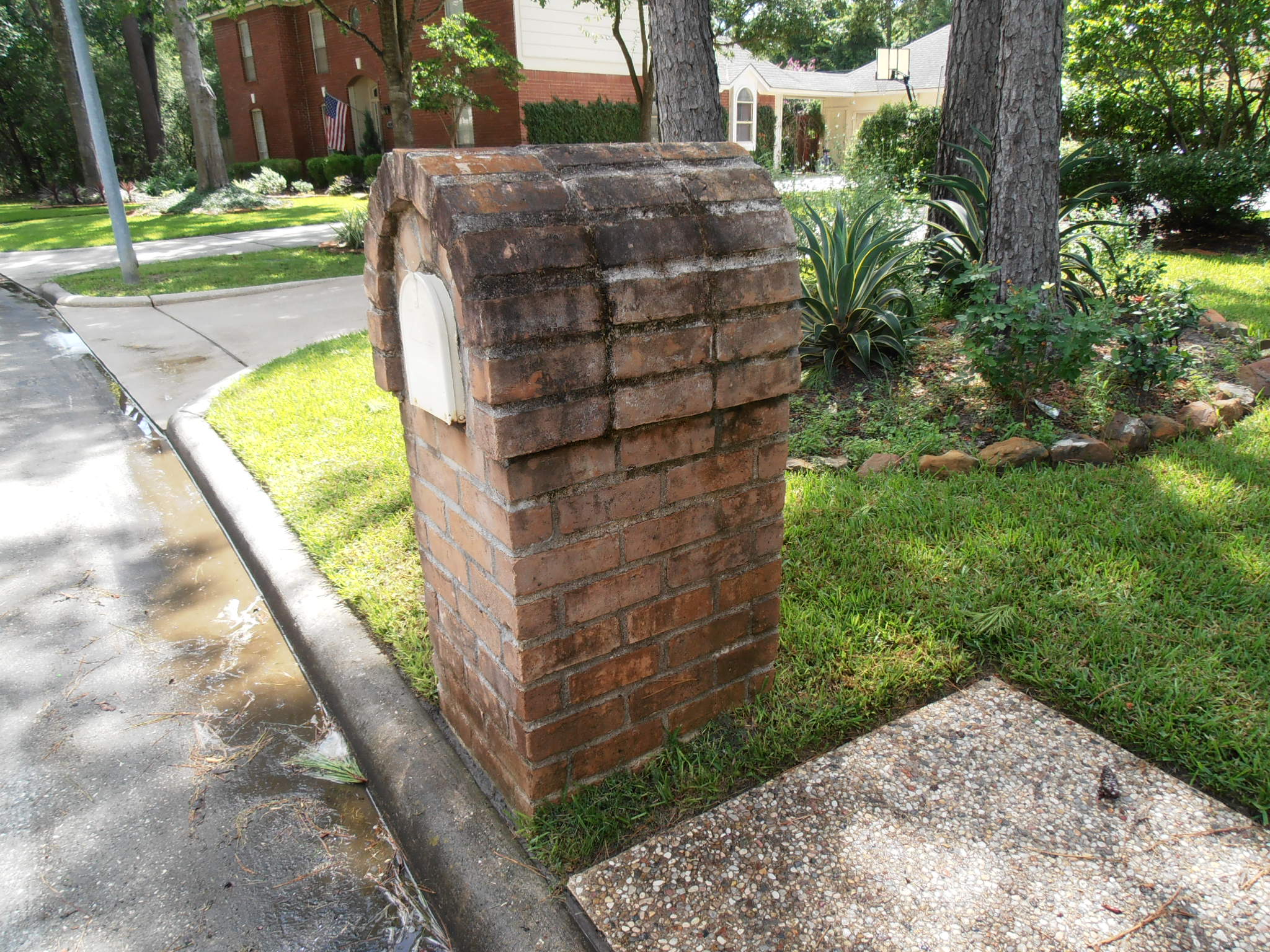
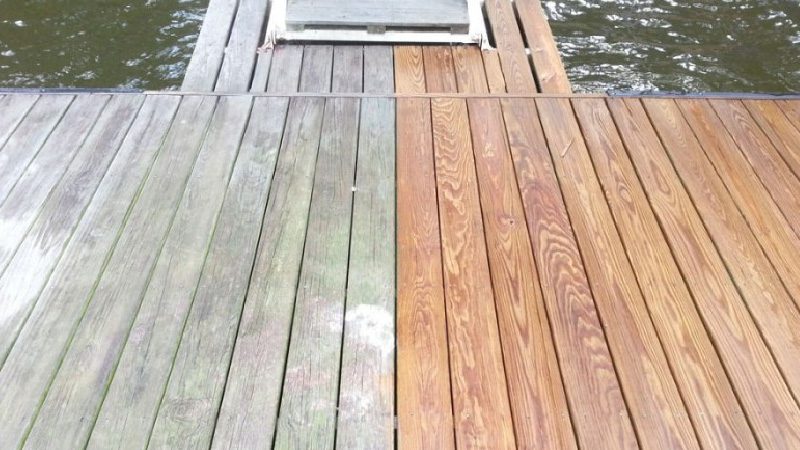
My first pressure wash a house tip:
Professionals use a “soft wash” method to apply a cleaning agent rather than actually pressure washing a house. The most common cleaner is a diluted blend of sodium hypochlorite (bleach) and surfactant detergents.
The mild soap is applied with a low-pressure spray to all the surfaces of your siding. The soap does the work (not the pressure washer) and removes the organic material. All you must do after a short dwell time is give your home a good rinse.
Here’s my second pressure washing tip:
Before you pressure wash a house, hydrate all the plants and grass around your home to protect them from the cleaning agent. A thin coat of water fills the cells on the surface of leaves reducing exposure to the cleaner. If left unprotected, direct exposure to cleaning agents may burn leaves and grasses.
Here’s my third pressure a house tip:
Before cleaning your home, cover anything you don’t want exposed to the cleaning agents like copper light fixtures, door handles or exotic wood doors. Sodium Hypochlorite will accelerate rust on iron or the patina on copper. Also tape electrical outlets where they meet the siding to reduce the chance of tripping a GFCI circuit breaker.
Here’s how to safely clean home siding yourself:
Most homeowner level pressure washers have a downstream attachment that allow you to “softwash” your home. You can purchase house siding cleaners from the big box home stores. They sell it by the gallon, and it works well with the downstream feature of your pressure washer.
Here’s my fourth pressure washing tip:
Your downstream attachment uses a venturi effect to draw cleaners into the flow of water going to your hose and nozzle. It’s typically at a 4-1 ratio. That’s 4 gallons of water to 1 gallon of cleaner it draws.
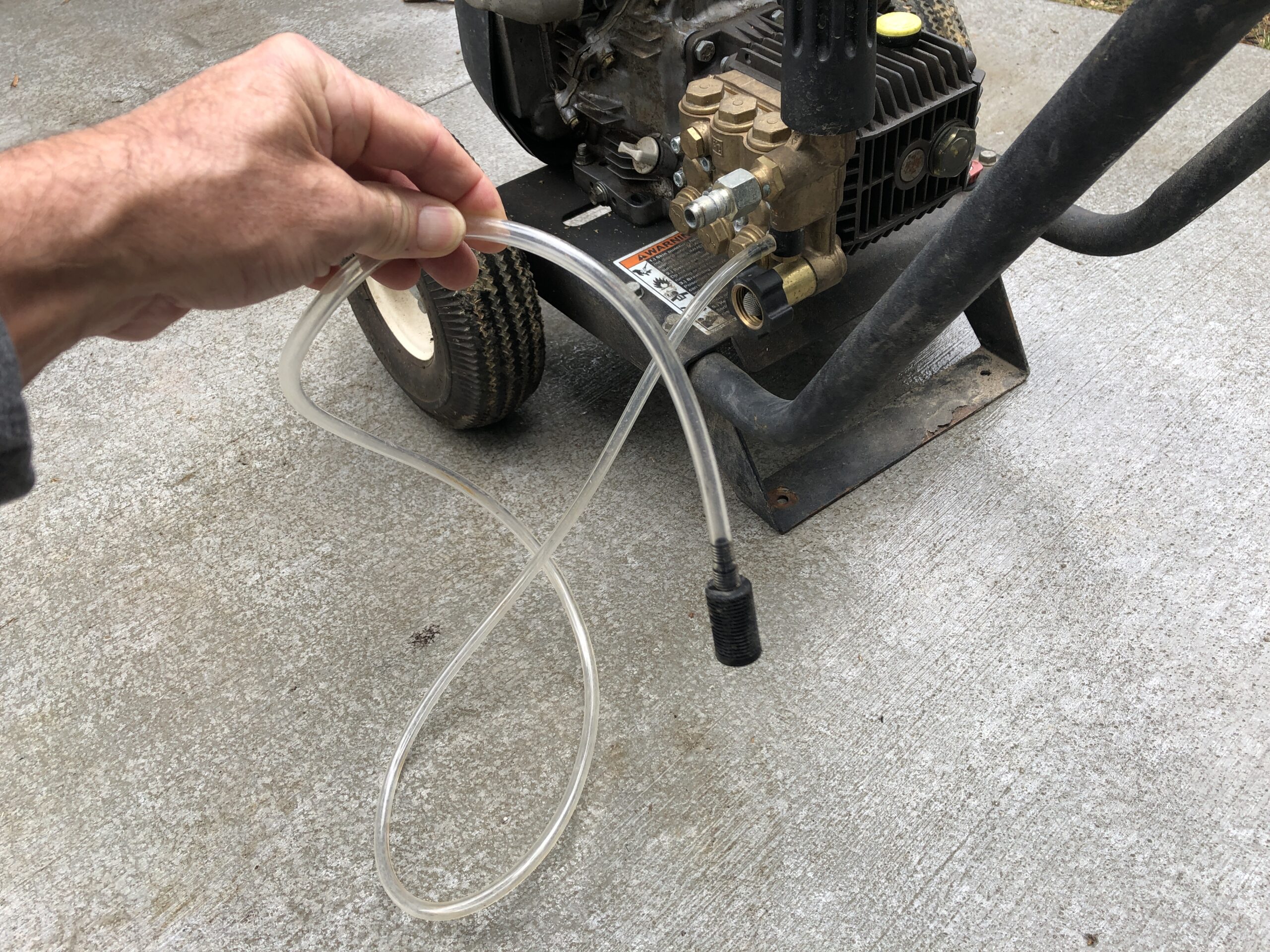
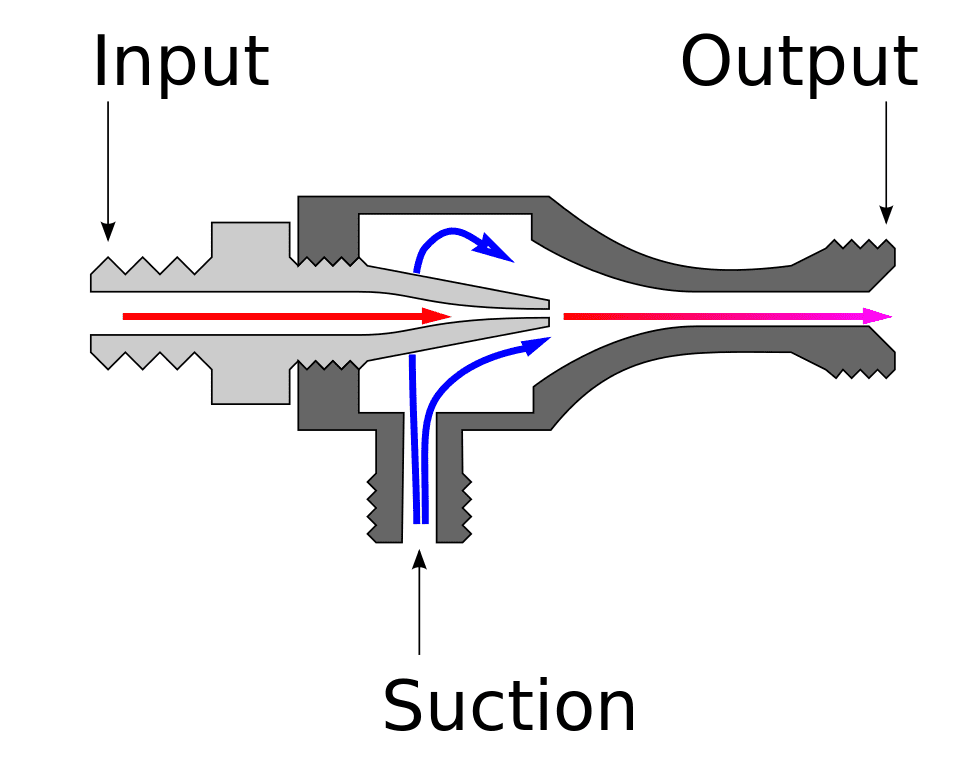
So, if the cleaner you purchase recommends diluting your cleaner 4-1, you simply drop the downstream pickup tube from your pressure washer into the cleaner and you’ve got a 4-1 ratio you’re spraying on your home.
To begin pulling soap through your pressure washer, all you do is change the pressure washer’s nozzle to the black “soap” tip. Next, drop the downstream hose into your soap mix and begin applying the cleaner to your home using your pressure washer. The soap may take a minute to travel the length of hose you’re using so be patient.
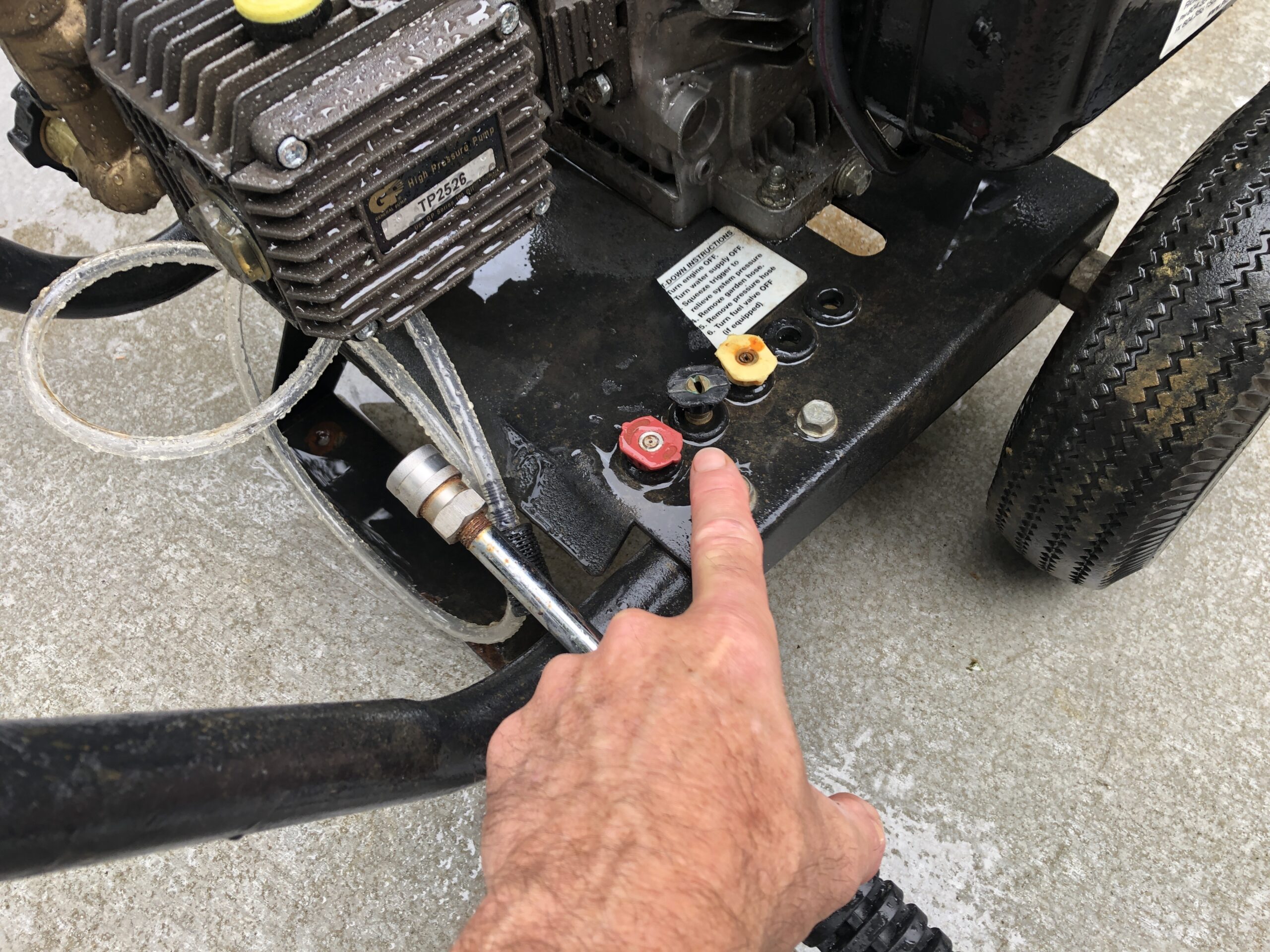
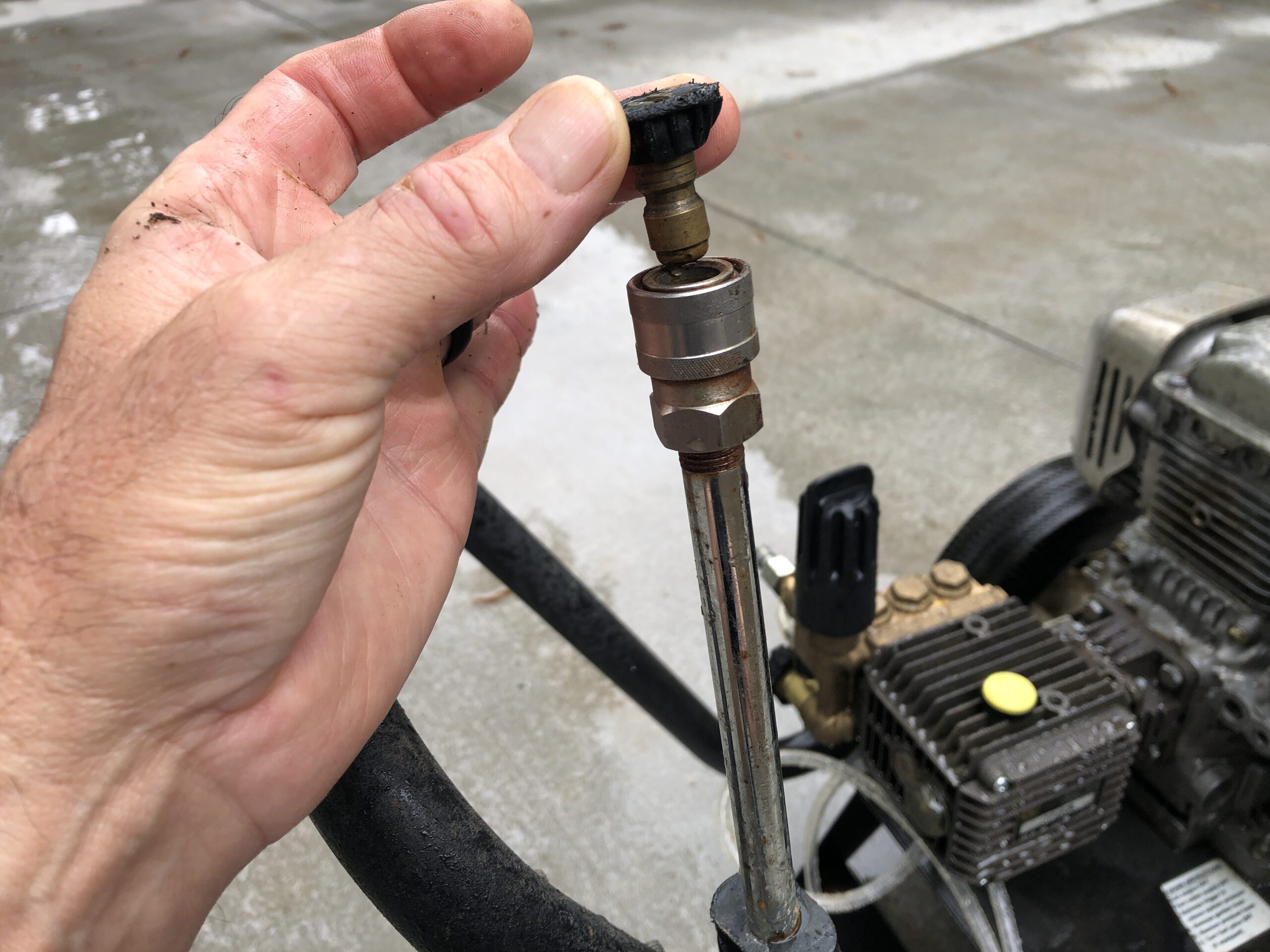
Let the mix dwell for 20-30 minutes and then rinse it clean. Of course, that is if you have a single-story home. This is a pressure washer capability problem. Many consumer level pressure washers don’t have enough power to reach the second story gable ends. You may have to purchase a professional soap shooter tip to reach these heights.
Another common problem I encounter is customers using high-pressure to clean their wood decks.
Here’s my fifth pressure washing tip:
When you pressure wash a house, never use high-pressure on your wood decks or fences. Many consumer level pressure washers can produce up to 3000 PSI or pounds per square inch of pressure. This is not only dangerous to a person but can rip into the wood’s fiber shortening its life.
Professionals always use cleaners to do the heavy lifting for them. I use oxygenated cleaners and surfactant mix on wood. It’s works great to remove mold, mildew, and algae growth.
You may have read that Sodium Hypochlorite also works on to clean wood. This is true, it does remove mold, mildew, and algae but there’s a downside. Deck cleaners containing bleach harm the woods lignin which is the organic substance that binds the cells, fibers, and vessels of the wood.
Pressure washing Professional always use a two-step process when cleaning wood. After rinsing the wood surface clean, apply a wood brightener to restore the wood back to it’s natural color.
Here’s how you can do it yourself:
Applying wood restoration cleaners is a little different than washing your home. All you need is a quality pump-up sprayer. Follow the directions on the wood cleaner you purchase for the correct dilution mix and application methods. WARNING: Oxygenated cleaners will produce oxygen increasing the pressure in your sprayer so purchase one with a pressure relieve valve.
Add the cleaner to the pump-up sprayer and pump it up. Spray the entire wood surface and let dwell as directed by the cleaning agent’s directions.
After the oxygenated cleaners have done their work, you can rinse the surface with a pressure washer using a low-pressure tip or simply increasing the distance between the nozzle and the surface you’re rinsing.
Applying a wood brightener is usually done exactly like the cleaner but read the directions on the product you purchase to make sure. Lastly, admire the new beauty you’ve uncovered through all your hard work
Lastly, if you’d like Neptune Clean to clean your house for you, click this link to get an instant quote.
Bill Seith
Owner of Neptune Clean LLC
Click this link for more Pressure Washing Tips Professionals Want You to Know
The Ultimate Guide to Pressure Wash a House
It’s almost time to open the windows and let in some fresh air! But before you do, it might be good to clean off your house first. If you live in an area with a hot and humid climate, like here on the Virginia coast, you probably want to pressure wash your house before summer (but fall and winter too!) to remove all the pollen, dirt, and other gunk that has accumulated on your siding over the course of the year. Read on for the ultimate guide to pressure washing your house yourself!
Prep Work
Before you pressure wash a house, it’s important to remove all lawn furniture, and other items that may be in front of or around your home. It’s also crucial that any plants surrounding your home have been removed so they aren’t damaged by soap splatter. If you have cement steps or a porch on your home, those can be cleaned as well.
Safety First
When it comes to how to pressure wash a house, there are some things you want to do safely. If you’re planning on using a pressure washer, ensure you read and understand the manufacturer’s instructions for safe operation. Always turn off and unplug any items outside your home to avoid damage. And make sure everyone else is aware of these safety rules as well. Put up appropriate warning signs if needed so others know where not to walk or stand when you’re pressure washing your house.
Determine Surface Type
If you pressure wash a house, you need to know what type of surface you’re dealing with before getting started. Many home sidings are made from cedar shake, vinyl siding, brick, or a cement composite like Hardie Plank just to name a few. The wrong cleaning solution could lead to damage especially on wood sided homes. If your house is sided with cedar shake, I suggest leaving that to the professionals as the wrong cleaner or too much pressure can damage the fibers of the wood.
Determine Amount of Soap Used
Before pressure washing, it’s important to calculate how much soap you’ll need. Most big-box home stores sell a pre-mixed house wash that can be applied through your pressure washer downstream injector. All you do is apply the soap to your siding, let it dwell the recommended amount of time. The soap does all the work, so you don’t have to use pressure. Too much pressure can force water into places you don’t want it to go.
Rinse Away the Grime
Now that the soap has had time to do it’s thing, you can simply rinse your home clean. Again, be sure to use a large orifice nozzle which reduces the PSI of your pressure washer to under 300 PSI. This will reduce the chances of forcing water under your siding causing potential moisture damage when you pressure wash a house.
Know When to pressure Wash A House Again
You’ll be able to tell if your house needs another power washing after a year or so. Power washing can remove tough stains, but it isn’t magical—it won’t remove truly stubborn stuff like chewing gum, asphalt, or organic stains like torpedo spores.
